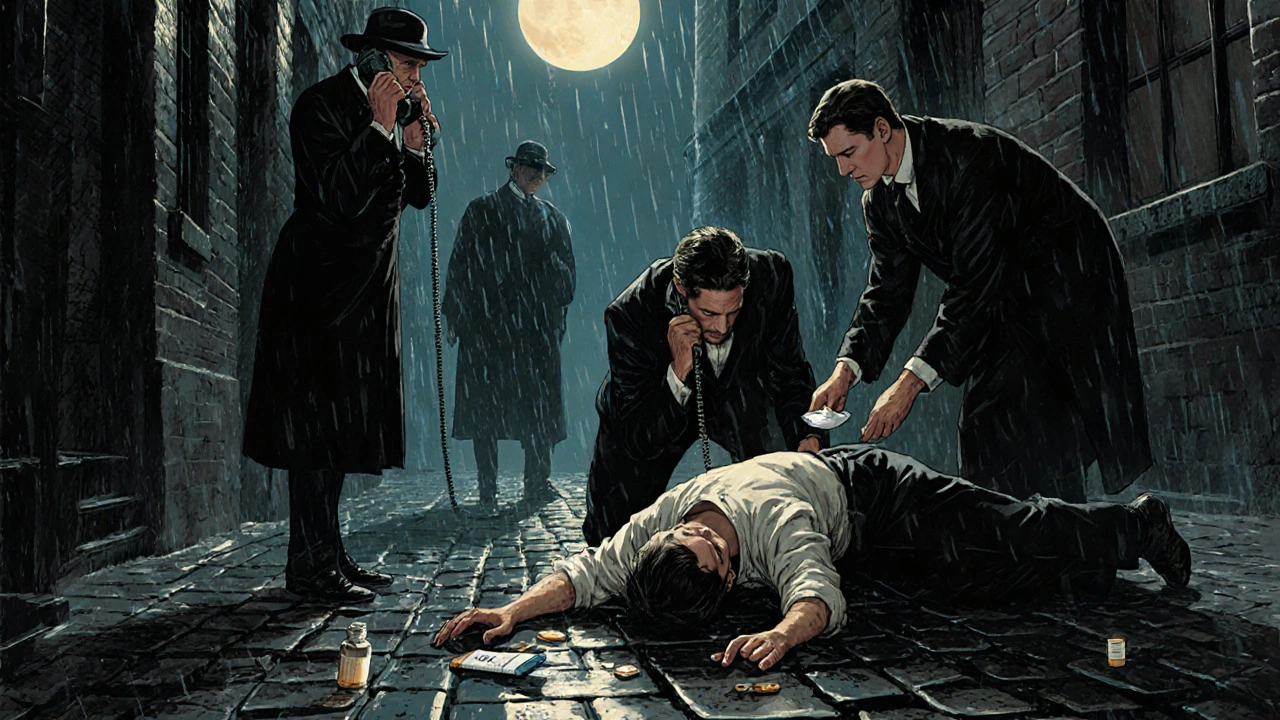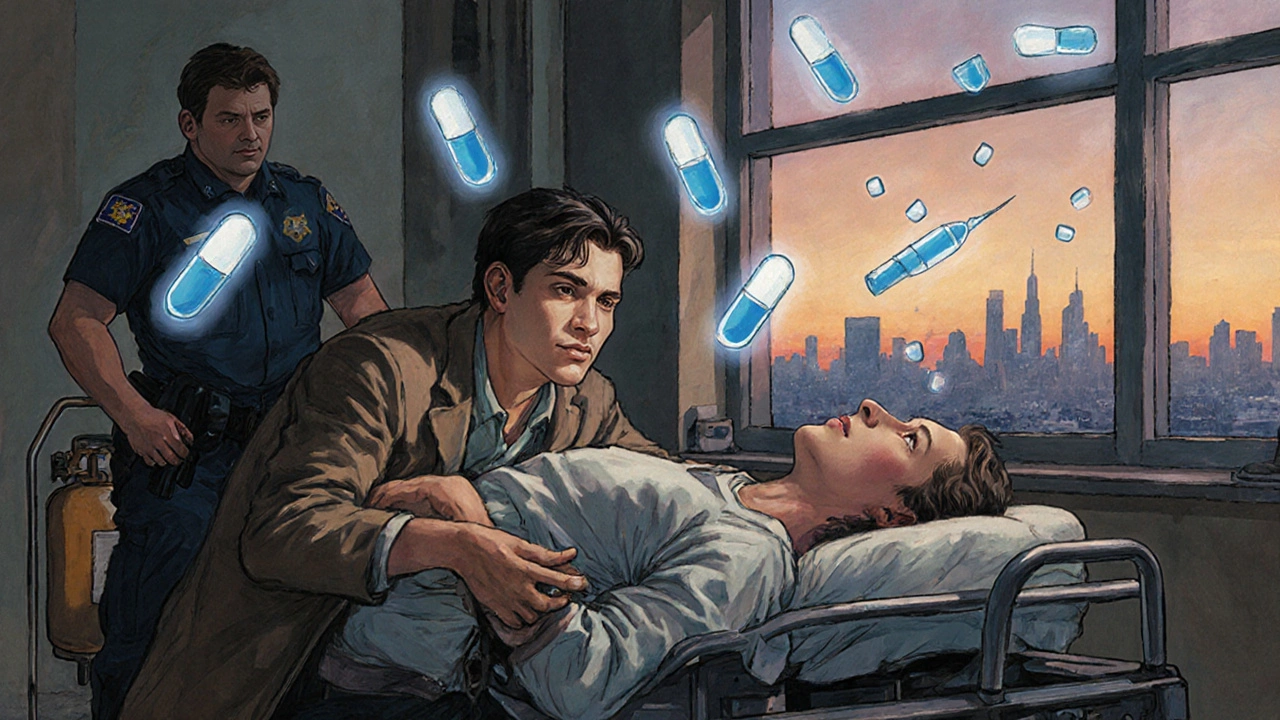Opioid Overdose Response Tool
A step-by-step guide to recognizing signs and responding to an opioid overdose emergency. Save lives by knowing what to do.
Recognize Opioid Overdose Signs
Check for these three core signs of opioid overdose (the "opioid overdose triad"):
-
1Unresponsive to shaking or shouting
Try shaking shoulder and yelling name. If they don't wake up, it's a red flag.
-
2Slow, shallow, or stopped breathing
Watch chest movement. Fewer than 12 breaths per minute or no breathing is dangerous.
-
3Pinpoint pupils
Shine light in eyes - tiny pinprick pupils are a classic sign.
Emergency Response Steps
Call 911 Immediately
Even if you give naloxone, the person still needs medical care. Effects of naloxone wear off in 30-90 minutes while opioids can stay longer. The person can slip back into overdose after naloxone wears off.
Step 2: Administer Naloxone
Naloxone won't hurt someone who hasn't taken opioids. But waiting might kill someone who has.
Most naloxone today comes as a nasal spray (like Narcan). Tilt the head back, insert the nozzle into one nostril, and press the plunger. That's it. No needles. No training needed.
Step 3: Stay With Them
Don't leave them alone. Put them in the recovery position: on their side, one leg bent, head tilted back to keep the airway open. If they stop breathing, start rescue breathing: one breath every 5 seconds.
After the Emergency
Waking someone up isn't the end. It's the beginning. Overdose survivors are at higher risk of dying from another overdose in the next month.
After naloxone works, the person may have withdrawal symptoms. They need medical care to check for lung damage, heart problems, or brain injury from lack of oxygen.
Don't assume they'll say 'no' to help. Many people who survive an overdose say it was the wake-up call they needed. Your action might be the reason they live to get help.
Get Naloxone Now
You don't need to wait for an emergency to be ready. Naloxone is widely available and often free.
When someone overdoses on opioids, they don’t look like they’re sleeping. They look like they’ve vanished - their body limp, their breathing shallow or gone, their lips turning blue. Time isn’t just ticking; it’s running out. In the U.S., opioid overdose kills nearly 200 people every day. But here’s the truth: most of those deaths are preventable. You don’t need to be a doctor to step in. You just need to know what to look for - and what to do.
What Happens During an Opioid Overdose?
Opioids - whether prescription painkillers like oxycodone, illegal heroin, or deadly synthetic drugs like fentanyl - work by binding to receptors in your brain. These receptors control pain, but they also control breathing. When too much opioid floods the system, it shuts down the signal that tells your lungs to keep working. Breathing slows. Then stops. Oxygen drops. Brain cells begin dying within minutes. This isn’t a slow fade. It’s a rapid collapse. And it doesn’t always happen to people you’d expect. A person might take one pill thinking it’s oxycodone, but it’s laced with fentanyl - 50 times stronger than heroin. Or someone who’s been sober for months relapses, their tolerance gone, and their body can’t handle what used to be a normal dose. That’s why overdoses happen to people who aren’t “addicts” - they’re just someone who took a drug they didn’t fully understand.Signs of an Opioid Overdose
You don’t need a medical degree to spot an overdose. Look for these three core signs - often called the “opioid overdose triad”:- Unresponsive to shaking or shouting - Try shaking their shoulder and yelling their name. If they don’t wake up, it’s a red flag.
- Slow, shallow, or stopped breathing - Watch their chest. Are they taking fewer than 12 breaths a minute? Or none at all? Listen for gasps, gurgling, or snoring sounds - these are signs of airway obstruction from lack of oxygen.
- Pinpoint pupils - Shine a light into their eye. If the pupils are tiny like pinpricks, it’s a classic sign. But don’t wait for this - not everyone has it.
- Blue, purple, or gray lips and fingernails
- Cold, clammy, or pale skin
- Limp body - like a ragdoll
- Choking or gurgling noises
- Extreme drowsiness or inability to stay awake
What to Do in an Emergency
There are three steps - and they must happen in order. Don’t skip any.- Call 911 (or your local emergency number) right away - Even if you give naloxone, the person still needs medical care. The effects of naloxone wear off in 30 to 90 minutes. Opioids can stay in the body much longer. The person can slip back into overdose after naloxone wears off.
- Give naloxone immediately - If you have it, use it. No waiting. No hesitation. Most naloxone today comes as a nasal spray (like Narcan). Tilt the head back, insert the nozzle into one nostril, and press the plunger. That’s it. No needles. No training needed.
- Stay with them until help arrives - Don’t leave them alone. Put them in the recovery position: on their side, one leg bent, head tilted back to keep the airway open. If they stop breathing, start rescue breathing: one breath every 5 seconds. Don’t stop until paramedics take over.

How Naloxone Works
Naloxone is a miracle drug - not because it cures addiction, but because it reverses the one thing that kills: stopped breathing. It works by kicking opioids off the brain’s receptors like a bouncer throwing someone out of a club. Within 2 to 5 minutes, breathing usually returns. It’s not magic. It doesn’t make someone feel better. It doesn’t cure pain. It doesn’t stop cravings. It just buys time - time for emergency help to arrive. And because its effects don’t last as long as most opioids, you might need to give a second dose. If the person doesn’t wake up after 3 to 5 minutes, give another spray in the other nostril. Naloxone has no effect on people who haven’t taken opioids. It won’t make them high. It won’t hurt them. It’s safe. It’s simple. And it’s now widely available - often for free - at pharmacies, community centers, and harm reduction programs. In 2023, the price dropped from over $130 to as low as $25 for a two-dose kit. Many states allow pharmacists to hand it out without a prescription.Why Fentanyl Changes Everything
Fentanyl is the silent killer in today’s overdose crisis. It’s not just stronger - it’s everywhere. Pills sold as Xanax, oxycodone, or even counterfeit Adderall are now often laced with fentanyl. A single milligram can kill. A grain of salt-sized amount can be fatal. That’s why testing your drugs matters. Fentanyl test strips - small paper strips you dip into a dissolved pill or powder - can tell you if fentanyl is present. They’re not 100% foolproof, but they’re better than guessing. Many harm reduction groups give them out for free. The CDC reports that synthetic opioids like fentanyl caused over 73,000 overdose deaths in the U.S. in 2022 - up 31 times since 2012. This isn’t a drug problem. It’s a poison problem. And the only way to survive it is to be prepared.
After the Rescue
Waking someone up isn’t the end. It’s the beginning. After naloxone works, the person may feel confused, anxious, or even angry. They might have withdrawal symptoms - nausea, sweating, shaking. That’s normal. But they need medical care. Opioid overdoses can cause lung damage, heart rhythm problems, or brain injury from lack of oxygen. They need to be checked out. They also need support. Overdose survivors are at higher risk of dying from another overdose in the next month. That’s why follow-up care is critical: counseling, medication-assisted treatment (like methadone or buprenorphine), and mental health support can save their life long-term. Don’t assume they’ll say “no” to help. Many people who survive an overdose say it was the wake-up call they needed. Your action might be the reason they live to get help.How to Get Naloxone
You don’t need to wait for an emergency to be ready. Here’s how to get naloxone today:- Walk into any pharmacy - ask for naloxone nasal spray. No prescription needed in most U.S. states and many other countries.
- Check with local health departments or harm reduction centers - many give it out for free.
- Some community organizations, libraries, and even police departments keep naloxone kits on hand.
- Online retailers sell FDA-approved naloxone with discreet shipping.


Write a comment